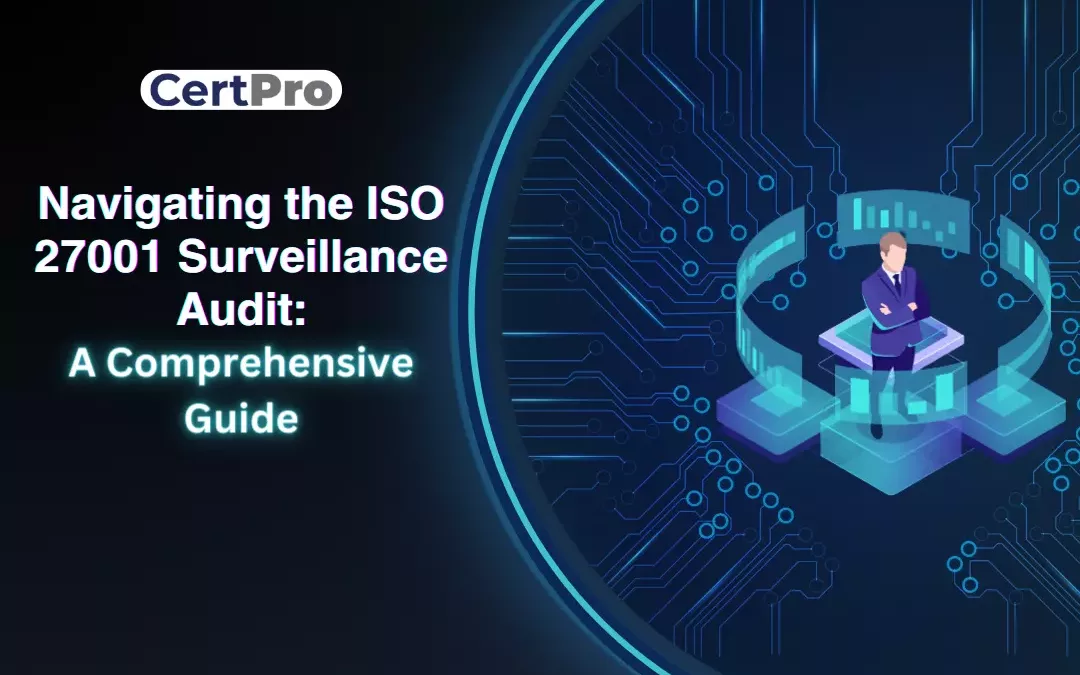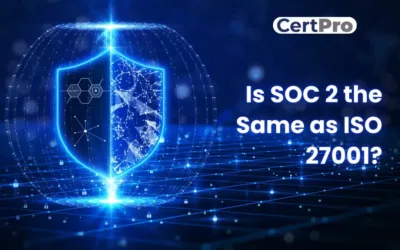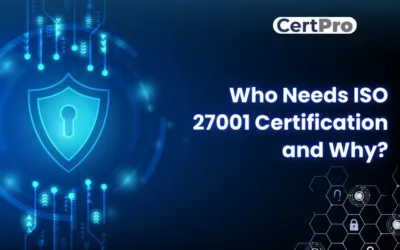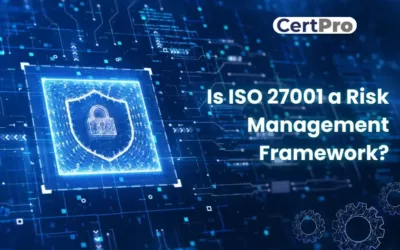Modern business is based on data and information that are adequately needed to protect against cyber threats. Therefore, the ISO 27001 framework helps create, present, and improve an organization’s information security management system. Furthermore, an ISO surveillance audit is essential for monitoring the efficacy of measures taken by the organization for its ISMS. Simply put, the audit assesses the effectiveness of ISMS compliance in your organization. The process evaluates security controls, information security, and risk management processes. Therefore, surveillance audit ISO 27001is ensures the protection of sensitive data and secures the data from manipulation. It also guarantees data confidentiality and your organization’s availability.
Now, you can ask what is ISO 27001 audit. Yes. This article will help you understand the process of ISO surveillance audits. In addition, we will discuss the complexity of the process and the ISO 27001 surveillance audit checklist. Hopefully, you will get a clear idea about the importance of the ISO 27001 audit after reading the article.
WHAT IS AN ISO 27001 SURVEILLANCE AUDIT?
WHY IS AN ISO 27001 SURVEILLANCE AUDIT IMPORTANT?
ISO 27001 SURVEILLANCE AUDIT CHECKLIST
HOW CAN ORGANIZATIONS PREPARE FOR AN ISO 27001 SURVEILLANCE AUDIT?
HOW DOES THE CERTIFICATION AUDIT CYCLE WORK?
WHY DO I NEED TO AUDIT MY ISMS?
HOW DO I PREPARE FOR AN ISO SURVEILLANCE AUDIT?
COST OF ISO 27001 SURVEILLANCE AUDIT
OBTAINING AN ISO 27001 CERTIFICATION WITH CERTPRO
What is an ISO 27001 surveillance audit?
An ISO surveillance audit ensures the organization maintains the standards as per ISMS. In this regard, an external auditor can perform the audit on a yearly or per the business demands. There is no hard and fast rule for the repetition of audits. It depends on the organization’s complexity and size. Similarly, the main aim of the ISO surveillance audit is to confirm that the organization is following the ISMS and addressing the new risks and vulnerabilities. Thus, the auditor will review the implemented policies and practices of the organization for maintaining the standards. The organization needs to secure their information and prevent cyber attacks.
Why is an ISO 27001 surveillance audit important?
It is crucial for the continuation of certification. The process ensures that the organization’s current security posture efficiently secures information. It also showcases your organization’s commitment to uphold the information security framework. The process also signifies the ongoing improvement in information security posture. Therefore, an ISO surveillance audit ensures that the organization complies with the international ISO 27001 standard.
ISO 27001 Surveillance Audit Checklist
ISO 27001 surveillance audit checklist is a tool that ensures that the organization is following the standards in its security framework. It is a complete checklist for the auditors to evaluate the organization’s compliance. The list includes items such as:
- Has the organization conducted a risk assessment?
- Do all employees understand their obligations and tasks in executing the ISMS?
- Has the organization implemented appropriate controls to address the identified risks?
- Has the company regularly audited its ISMS internally?
The ISO surveillance audit checklist helps auditors systematically assess an organization’s compliance with ISO standards. It is an essential component of the ISO 27001 audit checklist.
How can organizations prepare for an ISO 27001 surveillance audit?
The ISO 27001 surveillance audit demands multiple steps to evaluate the organization’s status. The steps are described below for better understanding:
- Evaluate an ISMS: The first step is to evaluate the ISMS and confirm that it is working effectively. If the process is working efficiently, then the standard will be maintained. In addition, the employees of your organization should be aware of changes in the procedures or policies regarding ISMS.
- Conduct an Internal Audit: Implementing an internal audit can find gaps or non-compliance in your organization. Therefore, it will recognize the organization’s weaknesses in maintaining standards and work on those areas for improvement.
- Address any Non-Conformities: The internal audit recognizes areas of non-conformity and suggests action plans to overcome the gaps. In addition, the audit process ensures the proper implementation of suggestions.
- Conduct a Risk Assessment: Therefore, implementing an internal audit helps identify emerging risks and create a risk management plan for mitigating them.
- Review your Documentation: It is crucial to the ISO surveillance audit. Proper documentation of policies and procedures is necessary for final audits. Additionally, it ensures that the organization is following specific operations procedures.
- Conduct Employee Awareness Training: The internal audit process ensures that the organization follows the necessary rules and regulations to conserve standards. Then, third-party auditors can evaluate compliance. Again, the employees who will be involved actively in the audit process must have sufficient knowledge and responsibilities.
These steps can prepare your organization for a successful ISO 27001 surveillance audit. Remember to continuously monitor and improve your ISMS to ensure ongoing compliance with the standard.
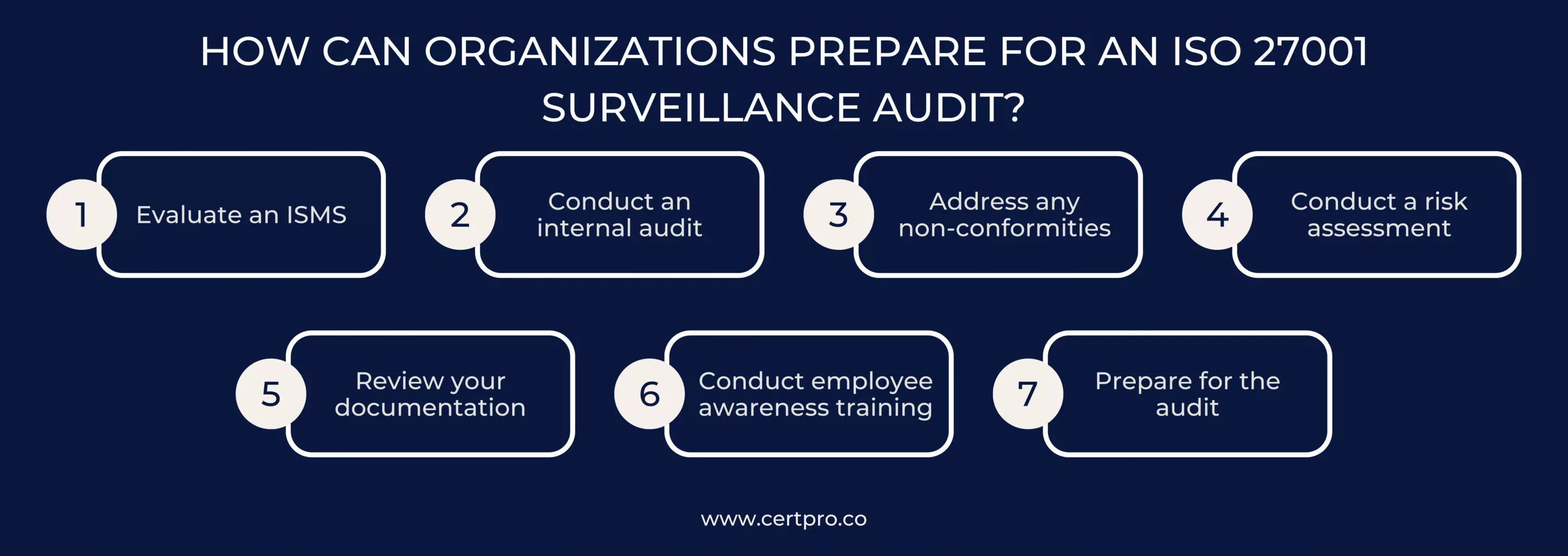
HOW DOES THE CERTIFICATION AUDIT CYCLE WORK?
Organizations follow a systematic process called the certification audit cycle. This helps them achieve certification in compliance with specific ISO standards. Furthermore, the systematic approach includes certification, surveillance, and recertification audits, guaranteeing continuous compliance. Auditors evaluate the organization’s systems, processes, and procedures in a certification audit. Acting as an exhaustive initial assessment, certification—which is normally suitable for three years—is obtained upon satisfactory compliance. ISO 27001 audit questions and answers are an integral part of this process.
The scope of the initial audit is replicated in the recertification audit. Therefore, a rectification audit is required after three years of the initial certification. The organization’s compliance is reviewed to maintain certification. It is necessary to show that the standards are still being followed. Thus, the certification audit cycle guarantees initial conformity and maintains it over time. The successful completion of an assessment demonstrates a company’s dedication to quality, compliance, and best practices. It provides a defined framework for ongoing evaluation and improvement. Therefore, enabling operational excellence can improve reputation and foster customer trust. Hence, the commitment offers a competitive advantage.
WHY DO I NEED TO AUDIT MY ISMS?
There are several essential reasons to audit your information security management system (ISMS):
1. Compliance Mandate: Internal auditing requires the creation of a well-organized internal audit program. Its adherence to the standard is the primary goal.
2. Assurance of Implementation and Operation: The audit procedure ensures a thorough check on the implementation and operation of your ISMS.
3. Alignment with Standards: It confirms that the ISMS complies with the standard’s requirements.
4. Custom Requirements: The audit verifies that the ISMS is designed to satisfy the company’s unique needs.
5. Organizational Objectives: As per Clause 6.2 on Information Security Objectives and Planning, the ISMS corresponds with the organization’s information security goals.
6. Risk Mitigation Effectiveness: The audit evaluates the ISMS’s effectiveness in decreasing information security risks to an acceptable level.
7. Nonconformities and Corrective Actions: Make sure that any nonconformities are promptly identified and fixed by implementing corrective measures.
8. Effective Incident Management: The audit process monitors the timely and effective reporting, handling, and resolution of information security events, incidents, and vulnerabilities.
Routine audits maintain the efficiency, integrity, and compliance of your ISMS. The auditor provides strong information security structures by rechecking the policies. In addition, the process considers the organization’s requirements and efficient risk mitigation.
HOW DO I PREPARE FOR AN ISO SURVEILLANCE AUDIT?
Preparing for an ISO surveillance audit is crucial. It assures both a positive audit outcome and ongoing compliance with ISO standards. The following are essential tactics that can assist in your adequate preparation:
1. Review previous audit results: Review the previous surveillance audits’ conclusions and remedial measures. Therefore, at the initial stage, ensure that the non-compliances are resolved.
2. Update Documentation: Ensure all documentation on your ISO management system is accurate and up-to-date. This includes work instructions, records, policies, and procedures. Revisions to systems or methods should be appropriately reflected in the documentation.
3. Conduct Internal Audits: Internal audits of your quality management system. This stage facilitates a more seamless surveillance audit by identifying possible problems requiring remedial action.
4. Employee Training: Training is mandatory to educate employees. Sustaining compliance requires raising awareness and providing training.
5. Preparing Documented Information: Carefully gather all the documentation needed for the surveillance audit. The process includes monitoring previous surveillance audits, recording remedial measures, and presenting proof of continuous compliance.
6. Management Review: Give your ISO management system a thorough management-level evaluation. Assess the system’s performance, look for areas for development, and address any organizational or strategy changes that might affect compliance.
7. Pre-Audit Meeting: Arrange a meeting with the audit team or lead auditor before the surveillance audit. This guarantees a more seamless experience by allowing you to discuss the audit’s scope.
8. Regulatory Compliance Check: Check for any modifications to industry legislation or ISO standards regularly. Check to see if your documentation and procedures match these changes. Maintaining compliance requires keeping up with the most recent rules.
9. Corrective Actions Implementation: Carry out any outstanding corrective actions from earlier audits and verify their efficacy. During the surveillance audit, provide proof of these corrective steps. It emphasizes that you are committed to resolving the issues found.
10. Auditor Familiarization: Educate the audit team about the unique needs, organizational structure, and operating procedures. Give them access to the locations they must audit and supply any required paperwork so that a more thorough and precise assessment can be made.
11. Employee Awareness: Inform the appropriate staff members about the impending surveillance audit. Everyone involved must work together and adhere to the ISO management system for the audit to go smoothly.
12. Simulation Exercises: To acquaint staff members with the audit procedure conduct simulated or mock audits whenever possible. This preventive action makes the team more ready for the audit by assisting in identifying possible compliance gaps.
13. Documentation Access: Ensure the audit team can easily access all relevant records and the areas they must inspect. This will simplify the procedure and enable a more effective and comprehensive evaluation.
14. Open Communication: Keep lines of communication open with the auditing team. Promote openness and truthfulness by swiftly responding to their inquiries. This cooperative approach enhances the effectiveness of the audit.
Following these steps can improve your readiness for a successful ISO surveillance audit. It will enhance your practice and uphold a solid commitment to ISO compliance.
COST OF ISO 27001 SURVEILLANCE AUDIT
Usually, the ISO 27001 audit cost might differ significantly, from INR 1,00,000 to INR 5,00,000 or more, especially for small and medium-sized businesses. The price depends on the complexity of your organization’s information security management system. In addition, it also depends on the size of the audit and the auditing firm’s experience level. Therefore, associated costs include documentation and preparation for the audit process. Consequently, it is imperative that firms allocate funds appropriately and thoroughly weigh the possible expenses related to attaining and upholding ISO 27001 compliance.
OBTAINING AN ISO 27001 CERTIFICATION WITH CERTPRO
Navigating the ISO 27001 surveillance audit can be complex and challenging. However, maintaining your organization’s ISO 27001 certification is essential. Therefore, the tips outlined in this article can help ensure a successful audit outcome. They will surely keep your commitment to information security.
In this regard, CertPro can also help you navigate the ISO surveillance audit process. CertPro offers various services to help you prepare for and manage the audit. Furthermore, our services include conducting internal audits, training, and providing guidance. CertPro enables you to address any findings from the audit. With CertPro’s help, you can confidently navigate the audit process and continue your compliance.
Lastly, the ISO 27001 surveillance audit is about more than just maintaining your certification. It is about demonstrating your commitment to information security and protecting sensitive information. Therefore, connect with CertPro and continually improve your ISMS. We assure you that your organization remains secure and resilient despite emerging threats and challenges.
FAQ
How does a surveillance audit differ from the initial ISO 27001 certification audit?
The initial ISO 27001 certification audit focuses on assessing the organization’s readiness for certification. It thoroughly examines all aspects of the ISMS implementation. In contrast, a surveillance audit is performed on a regular basis after certification to confirm the ongoing compliance and effectiveness of the ISMS.
What is the purpose of a surveillance audit in ISO 27001?
The purpose of a surveillance audit is to provide ongoing assurance that the organization’s ISMS remains in compliance with the ISO 27001 standard and continues to effectively manage information security risks. It ensures that the organization maintains the necessary security controls and follows the established processes.
Who conducts the surveillance audit for ISO 27001?
An independent certification body or auditor that is qualified to carry out ISO 27001 audits conducts the surveillance audit. These auditors have the necessary expertise and experience to assess an organization’s ISMS against the requirements of the standard.
How long does it take to receive the ISO 27001 surveillance audit report?
The time to receive the ISO 27001 surveillance audit report can vary, but it typically takes a few weeks to a couple of months after the completion of the audit.
Are there any specific documentation requirements for an ISO 27001 surveillance audit?
Specific documentation requirements for an ISO 27001 surveillance audit may vary, but typically include the organization’s documented information related to the ISMS implementation, controls, and performance.

About the Author
ANUPAM SAHA
Anupam Saha, an accomplished Audit Team Leader, possesses expertise in implementing and managing standards across diverse domains. Serving as an ISO 27001 Lead Auditor, Anupam spearheads the establishment and optimization of robust information security frameworks.
IS SOC 2 THE SAME AS ISO 27001?
In today's digital landscape, ensuring the safeguarding of client data is paramount for businesses. Adhering to recognized compliance standards is vital to meeting this demand. ISO 27001 vs. SOC 2 represent two prominent benchmarks in the realm of data security with...
WHO NEEDS ISO 27001 CERTIFICATION AND WHY?
The esteemed ISO 27001 security framework is designed to evaluate the effectiveness of an organization's Information Security Management System (ISMS) in safeguarding its data. Obtaining ISO 27001 certification is a practical way for a corporation to demonstrate its...
IS ISO 27001 RISK ASSESSMENT VITAL FOR SECURITY MEASURES?
The ISO 27001 standard provides a framework for information security, highlighting the importance of a thorough risk assessment procedure. Organizations use the methodical and complex ISO 27001 risk assessment process to identify and assess information security...

